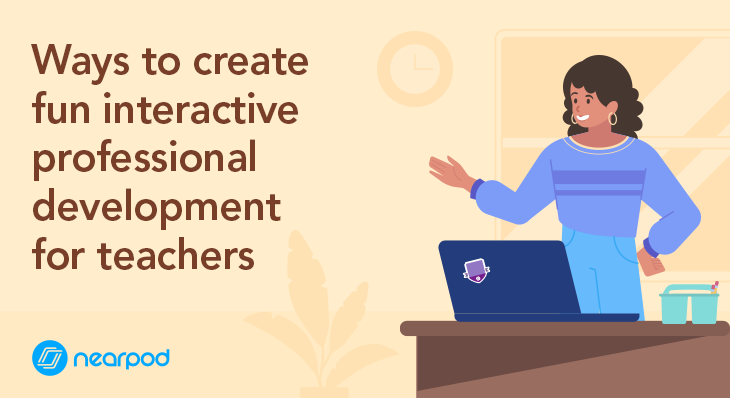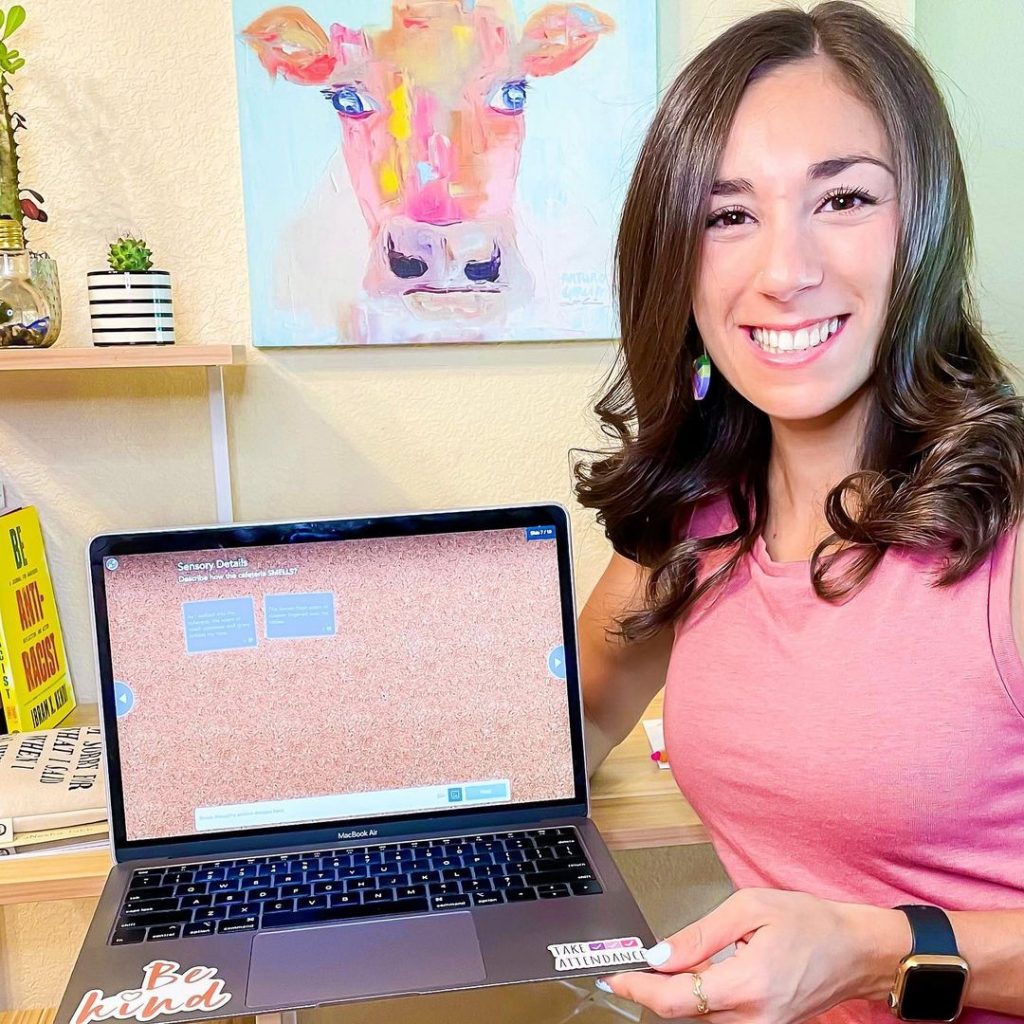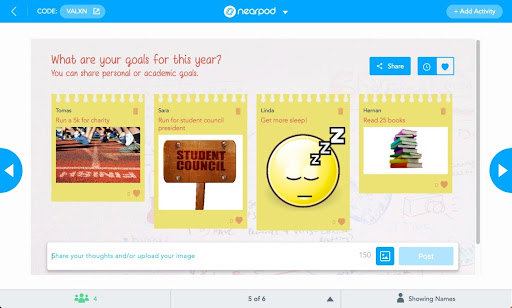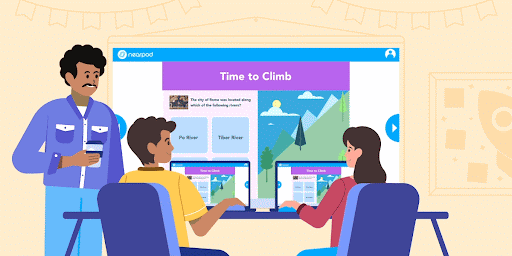
How to make interactive professional development activities for teachers
The need for interactive professional development (PD) is needed now more than ever.
As an instructional coach, professional development leader, and conference presenter, I find that creating an engaging professional development session is similar to creating a stellar lesson in the classroom.
- I need to know and explain why this content is being covered and how it’s helpful in teacher practice.
- I need to ensure I am giving teachers the chance to learn and collaborate during professional development sessions actively. I want to consider how engaged my audience will be throughout the session and ensure that I thoughtfully use an interactive professional development experience for those attending.
I can accomplish this with active learning strategies and providing opportunities for collaboration by using handy tech tools such as Nearpod.
How to make interactive professional development activities for teachers
Importance and impact of PD for teachers
As educators, we have dedicated ourselves to a profession that encourages lifelong learning. Our ever-changing society is in constant flux. As more research on how students learn best, our instructional practices must change to rise to the standard of today’s challenges and be the most effective. The purpose of professional development is to continue building teachers’ capacity to increase student outcomes. Professional development is an avenue to directly impact teacher skills, leading to improved classroom practices and positively impacting student outcomes (Yoon et al., 2007).

However, teachers and administrators across the nation have been working harder than ever. When educators are stretched thin, the last thing they want (or need) is bad professional development. Bad professional development can be ineffective, unhelpful, and downright boring. How do we, as building and district leaders, ensure that we serve teachers well? We can do this by integrating professional development that is engaging and effective. Ensuring that best professional development practices are used is the key to success.
Integrating active learning
Interactive professional development should integrate active learning. Lecture-based professional development has low engagement and leaves little room for innovation and reflection. Bates & Morgan (2018) explain that incorporating hands-on experiences into professional development can make learning a more meaningful experience. Active learning can also include watching a model lesson (Garet et al., 2001). Interactive professional development can be integrated in a multitude of ways. For example, teachers can participate in a model lesson with the materials used in a similar lesson. This would allow teachers to experience and think about how they would incorporate this lesson or practice into their classrooms.
Want to introduce a new website or app for teachers to integrate into their practice? Great! Use it with them so they have an opportunity to explore the edtech platform. Edtech tools, such as Nearpod, create fun, professional development activities for teachers, allowing them to see how they could integrate professional development in the classroom.
Using Nearpod’s activities, presenters can take a lecture-based presentation and turn it into a fun activity for a teacher workshop. Here are a few ideas presenters can use:
Interactive activities
- Have teachers try a Time to Climb activity and watch them laugh and get competitive!
- Integrate checks using the Quiz or Poll feature throughout the presentation to gauge teacher understanding of the content.
- Easily watch an example lesson using Interactive Video. It can be made interactive by adding stopping points throughout the video. These stopping points can have moments for teachers to reflect and ask questions about the lesson.
Opportunities for collaboration
Discussing classroom practices can be a personal matter requiring teachers to be vulnerable and trust their peers. Building leaders should encourage community building through activities and discussion before instructional methods. Just like a classroom teacher would build relationships with and among the students in their class, administrators are tasked with building relationships with teachers and encouraging them to build community among themselves. A strong teaching community and school culture allow educators to be vulnerable and openly share their practices, reflections, wonderings, and concerns. Deep relationships provide the space to encourage teachers to dig in and work to change their instructional practices (Bates & Morgan, 2018).
Through professional development activities, we want to encourage collective efficacy within a staff. Giving teachers time to reflect, process, and collaborate throughout a professional development session is another way to integrate interactive professional development. Either in partners, small groups, teams, or as a whole group, have teachers share their reflections, connections, and questions for the betterment of the group. “Collaboration supports a togetherness mindset and develops collective knowledge that extends beyond individual, isolated experiences in the classroom” (Bates & Morgan, 2018).
Collaborate Board

A feature on Nearpod that works well for discussions is the Collaborate Board. Participants can type in their thoughts, add a GIF, or upload an image or video onto a virtual note and post it on the board for all to see. Participants can like and comment on the posts as well.
This tool can be used in many ways, such as by having participants process, reflect, and share their thoughts and providing time for everyone to read reflections. It can also be used for small groups to share what was discussed with the larger group. With collaboration boards, everyone is given a voice.
My personal experience using Nearpod for teacher PD
I love using Nearpod in my teacher PD training because it is a way to keep teachers focused on the content with fun professional development activities for teachers. During the pandemic, I was a guest speaker on differentiation in the classroom for a virtual professional development teacher prep class. I needed a way to ensure students were engaged even online. I decided to use Nearpod from afar, and it was a hit!
The Matching Pairs activity was used to help students know the different types of student plans they may encounter (IEPs, 504s, ALPs, etc.). I used the Collaborate Board to have them share ideas about how to use accommodations in the classroom. The Quiz feature is excellent for checking for understanding and seeing if I need to go back and explain a topic that may have been confusing. I also used Open-Ended Questions to have students reflect throughout the presentation and give me feedback at the end. Even when we returned in person, I used Nearpod as a way to turn the ‘lecture-esque’ portions of training into a collaborative one. It is an invaluable tool I will continue using for training and professional development!
@thefantasticallyfourth @Nearpod streamlines everything on one platform! Check out #Nearpod for your lessons! #ad ♬ original sound – Shane Saeed
Education is constantly shifting and changing with new research and technology. Due to this, PD for teachers will never go out of style. However, we need to hold ourselves as presenters and trainers to the same high standard as we have our teachers: to be engaging. Nearpod is a fantastic tool that can be used to increase staff engagement and buy-in. Who knows, your modeling of Nearpod during professional development might encourage a teacher not only to take what they learned from your training and apply it in the classroom but also to integrate Nearpod!
Interested in reading more about this topic? Check out this blog post: 10 Ideas for redesigning a new teacher orientation

Shane is a Learning Coach for St. Vrain Valley School District. She partners with educators and administrators to integrate high-leverage practices into the classroom. She enjoys sharing her professional learning on Instagram (@fantasticallyfourth) and presenting nationally at teaching conferences.









